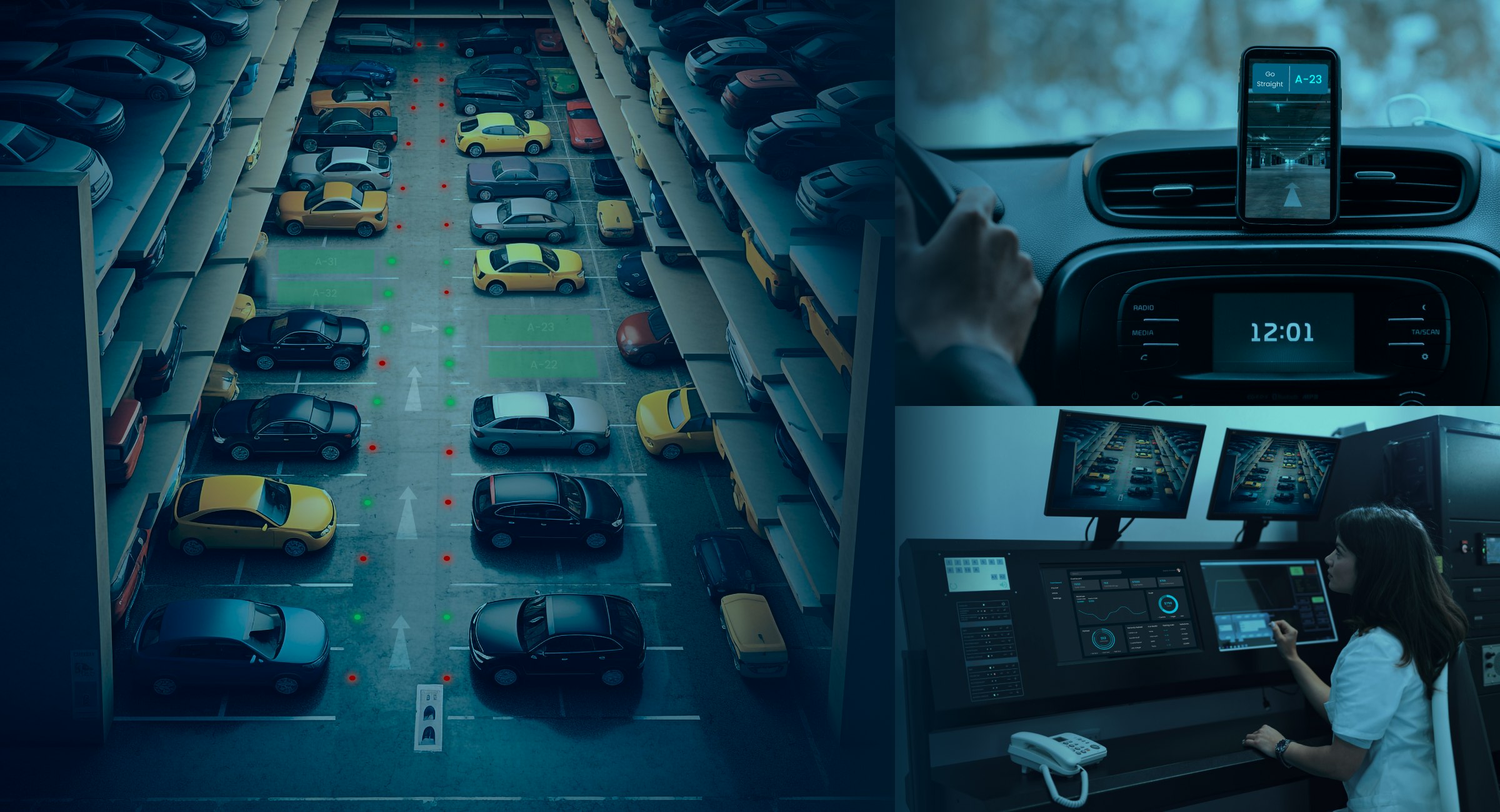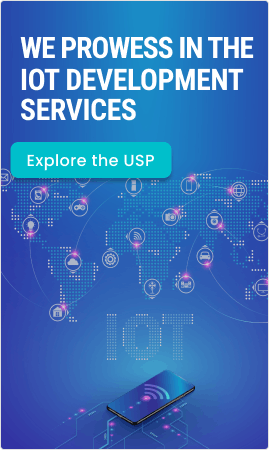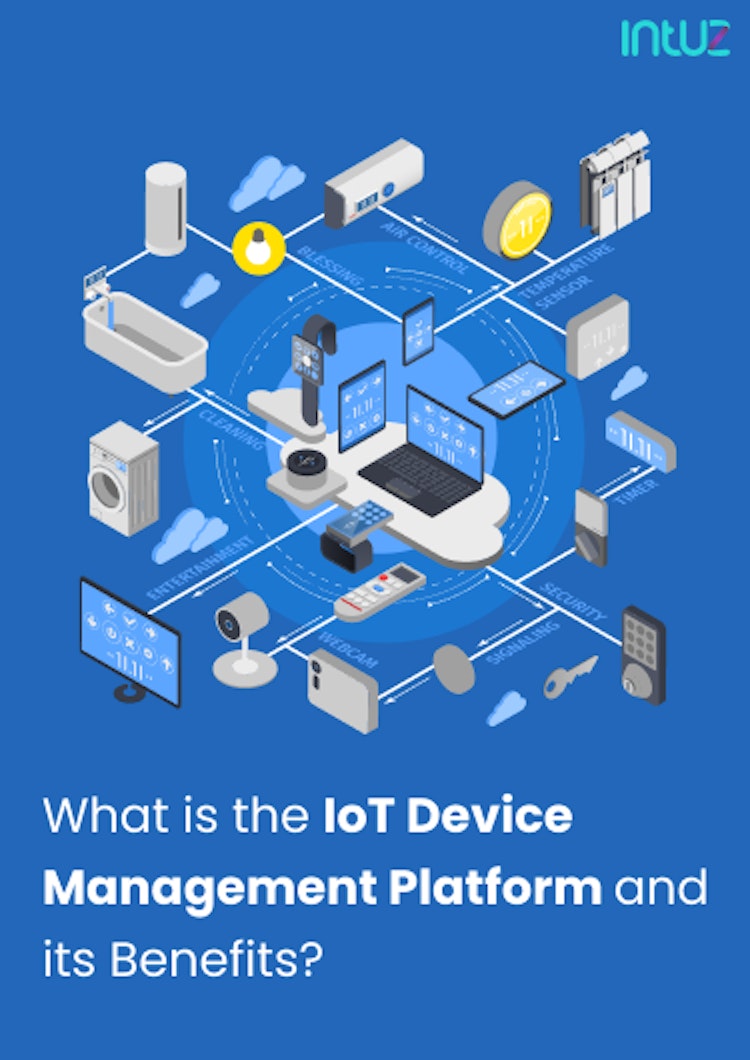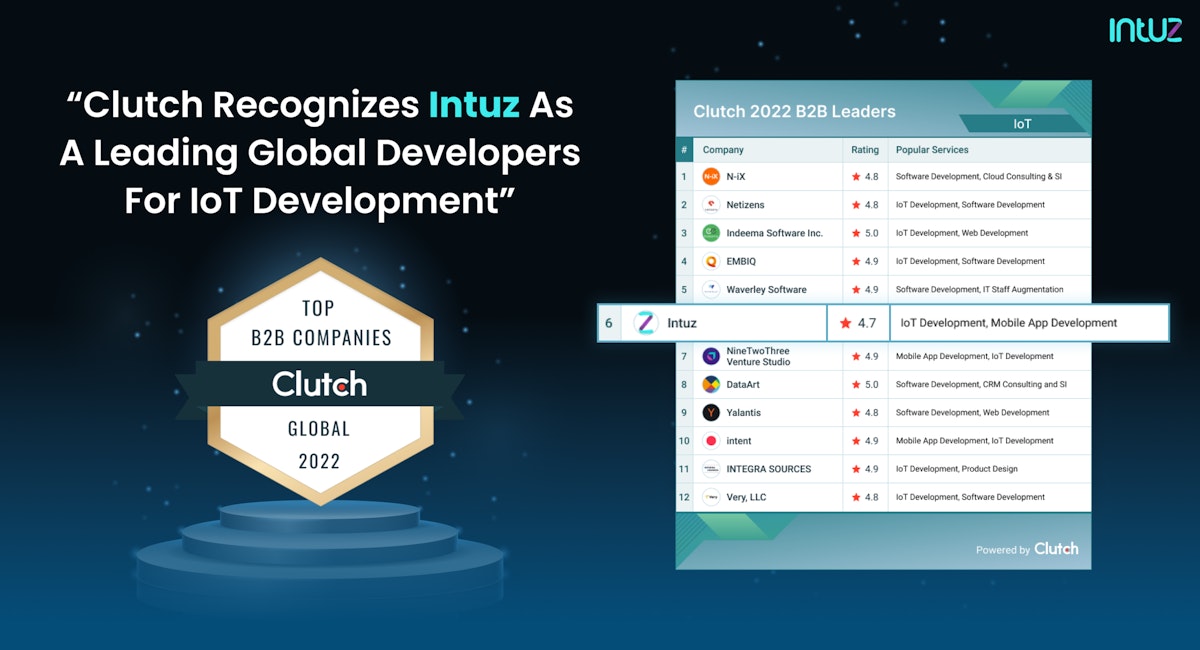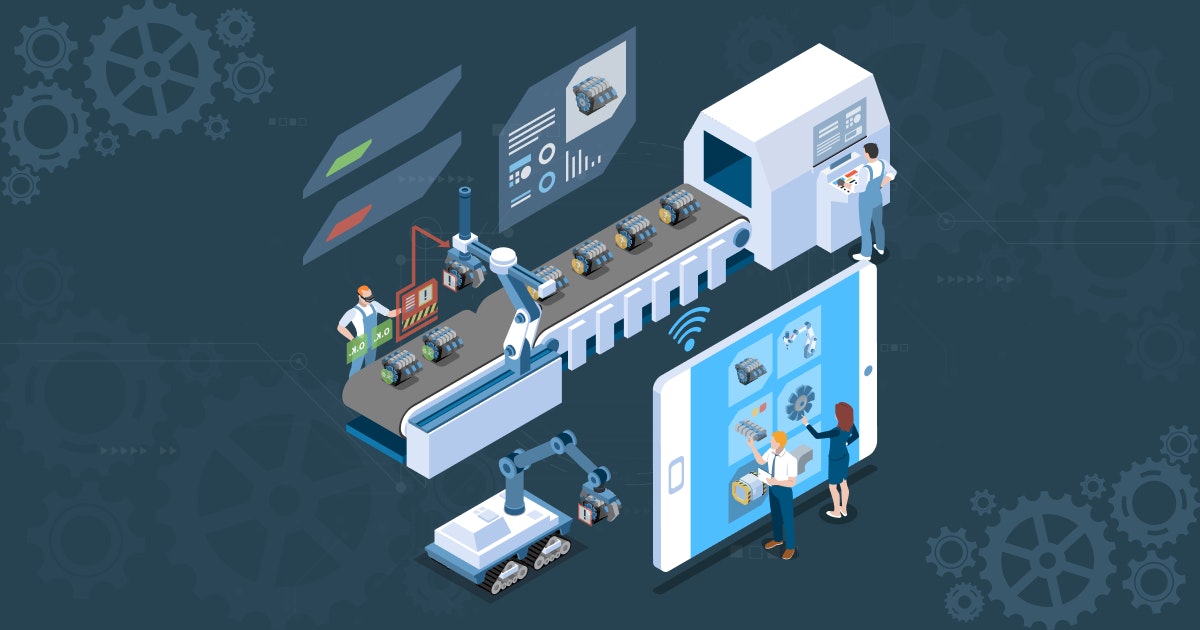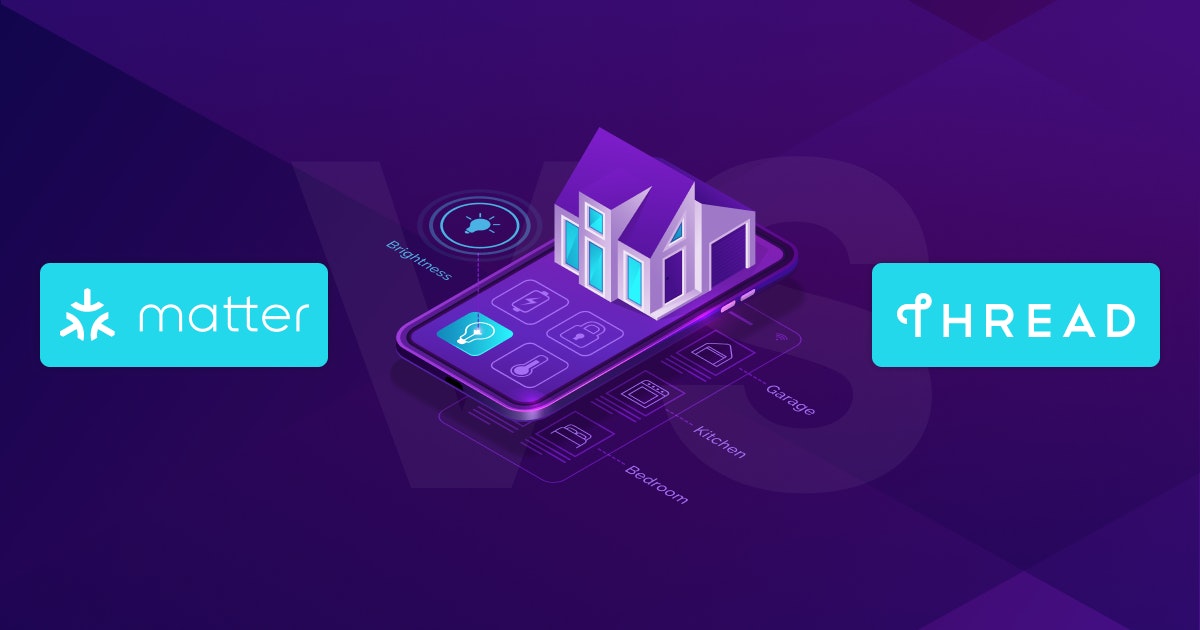Table of Content
Urbanization is on the rise, and the complexity of city traffic is growing daily, especially post-COVID when everyone seems to be out on the road. Public transport is not easily accessible for all while parking a personal vehicle is even tougher (and costlier).
The requirement for an Internet of Things (IoT)-powered parking system has, therefore, gained prominence to minimize ongoing traffic congestion and reduce parking availability's unpredictability. With numerous connected devices on the horizon, devising an IoT-based smart parking system is relatively easy now.
Using AI and IoT for smart parking improves the safety of parking lots by avoiding accidents. Integrated with IoT devices, AI uses data from sensors and computer vision to help drivers find an empty place in the parking lot easily. To provide accurate information about available parking, it uses real-time data from cameras situated in different locations of the parking. By providing the parking rates, AI makes the process smoother.
What is a smart parking system using AI & IoT?
An AIoT (AI + IoT) based smart parking system is a centralized management that enables drivers to search for and reserve a parking spot remotely through their smartphones. It offers a convenient arrangement for drivers to park their cars when they are looking to avoid potential traffic congestion.
The system’s hardware sensors detect available slots and communicate the information to the drivers in that area in real time. IoT technology ensures they do not have to worry about finding an available space again – allowing them to travel conveniently.
Combined with IoT, AI builds cutting-edge parking solutions by collecting data from varied devices such as sensors and cameras. These devices or sensors are implemented only in the parking space to generate accurate output. This helps to identify empty parking slots.
AI-based parking systems provide pricing information to drivers or ride business companies. It helps them make reservations by paying in advance through e-wallets. This makes the parking process more convenient for the drivers.
Besides, the connected device sends alerts about peak times and surcharges. No one wants to struggle to find a parking slot or pay more at any given point.
Using smart parking technology will help maximize the consumption of existing parking space, increase the effectiveness of parking operations, and facilitate easier traffic flow with just a few taps on a mobile app.
Smart parking solutions are intended to give drivers complete control of their journey - from start to finish - without having to hunt for parking. The AI & IoT technology helps save costs and minimize travel time. IoT forms the foundation for real-time data collection and AI for analysis.
IoT provides the means to connect various devices and sensors in the parking ecosystem and fetch data that can be used for AI analysis to optimize operations. The future of smart parking lies in integrating AIoT with autonomous vehicles. The arrangement would free up even more road space and make it easier for people to get around.
Revolutionize Your Parking Management with AI & IoT Technology!
Let's get startedAI & IoT-based smart parking architecture
Smart parking management systems based on AI & the Internet of Things (IoT) typically follow a layered architecture consisting of several components:
1. User app and web interface
These are the user-facing applications. Drivers can use the mobile app to find parking, while managers can use the web interface to monitor and manage the system.
Boost the user experience of web and mobile app interfaces by integrating AI. It helps you offer personalized suggestions and anticipate parking availability. AI and IoT, together create intuitive interfaces that understand and analyze user behavior and deliver real-time updates on the parking situation. This ensures seamless parking management.
2. Cloud platform
This central platform stores and processes all the data collected from the sensors. It also performs real-time analysis and provides the user interfaces with the necessary information.
AI makes the cloud platform more powerful by offering robust data analytics that help businesses make real-time decisions. It contains advanced capabilities for processing vast amounts of data generated by IoT sensors or devices. AI algorithm improves the efficiency of parking management systems by
- Recognizing trends and patterns
- Helping in making well-informed decisions
- Providing insights for predictive maintenance
3. Gateway/edge device
This device collects data from the sensors in the parking lot. It may perform preliminary processing and routing of the data before sending it to the cloud. In some cases, edge computing might be implemented for tasks like data filtering or aggregation.
When AI is integrated with gateway or edge devices, it provides critical information about the source of data. Also, it ensures real-time data processing by reducing latency. Using AI in IoT solutions helps you make accurate decisions quickly. Eventually, it enhances overall parking management by minimizing cloud processing.
4. Sensors
These are installed in each parking space to detect vehicle presence. They can use different technologies like ultrasonic, magnetic, or cameras. AI holds an amazing capability of understanding and interpreting data correctly and identifying inconsistencies.
Integration of AI into IoT can improve the accuracy of the sensor reading. This helps you monitor and manage the parking areas effectively.
5. Parking lot
This represents the physical location where the smart parking system is deployed.
The layered architecture of a smart parking system based on IoT allows for scalability, modularity, and flexibility. Each layer can be independently updated or replaced without affecting the entire system.
Transform the way parking operates by harnessing AI's potential. The technology can forecast demand and provide the right direction for vehicles.
Integrated with IoT systems, AI can adjust parking lots in real time. This helps you create a more efficient environment by streamlining traffic flows and reducing space usage.
The massive problem with the current parking management
Research shows that most cars search for parking spots for around 3.5 to 14 minutes. Drivers who lack patience sometimes park illegally and if caught, have to pay hefty fines. In crowded cities, this amounts to a loss of around 470 to 1870 hours looking for car parking. Is the hassle worth it? Not!
Another research shows that up to 68% of the world's population will reside in urban areas by 2050. As we advance, this will directly affect how drivers park their cars in urban areas. Either we stop purchasing cars or leverage IoT technology to optimize parking slots.
The second option seems to be an ideal choice as smart parking innovations grow in popularity. They help in eliminating the following problems from the mix:
1. Overpaying
Sometimes, drivers still determine how long they will stay in a particular location. As a result, they may pay too much for parking while the duration may be much less.
2. Environmental impact
Besides time, a lot of fuel is consumed looking for an appropriate parking space. When it rains, numerous pollutants accumulated in the parking lots get washed, creating dirty, wet mud and foul smells.
3. Parking inappropriately
The parking lot at the mall or the customer's intended destination is usually insufficient and they end up parking outside the designated spot. It results in greater traffic congestion.
4. Overcrowded parking spaces
The biggest issue right now is that more cars are on the road than the parking spots. Talk about bumper-to-bumper traffic!
5. Insufficient parking space utilization
People frequently lack patience or are unaware of parking slot availability. They tend to park improperly due to the rush. Occasionally, they may not leave enough room for other vehicles to park. These lead to traffic blockages.
Application of smart parking system using AI and IoT
The rapid demand for parking spaces stems from two major trends – urbanization and car ownership. In a short period, the IoT-based parking management system has positively impacted all stakeholders involved in the process.
For instance, drivers can plan trips and commutes keeping slot occupancy in mind. Enforcement agencies can detect and evaluate the gravity of parking rules violations in seconds.
Parking facility managers can optimize the use of the personnel and the available space. Adding to that thought, AIoT can be used in parking management in the following ways:
- Create “smart” parking meters that accept payments via credit card or smartphone and provide real-time information on space availability.
- Extend the operating time of an autonomous parking system by consuming less power with the help of the LoRaWAN® networking standard.
- Send real-time data from IoT sensors to a cloud server and share it with users to provide them with the details of free parking spaces.
- Leveraging AI in IoT, you can anticipate open spaces as the technology analyzes real-time and historical data and helps drivers find the nearest empty post.
- AI adjusts the pricing according to the changing demand for parking slots. This helps improve parking space usage and increases revenue.
- Integration of AI in smart parking systems ensures the seamless payment process through mobile apps and license plate recognition. Eventually, it enhances user convenience and experience.
- Determine the number and position of vacant parking spaces precisely using IoT sensors.
- Reduce congestion and improve traffic flow by using sensors to monitor parking space availability and direct drivers to available spaces.
- IoT gateway and the LPWAN protocol help connect IoT devices and sensors in sizable parking lots.
- The parking management company can use a cloud-based IoT dashboard. It uses gathered sensor data to mine intelligible insights that are visually appealing and provide a clear picture of the parking facility.
- Optimize parking operations and improve security by tracking vehicles entering and exiting a parking facility.
- Mobile applications can display parking data to drivers and send alerts in case of a security breach.
- Monitor environmental conditions in parking garages, such as air quality and temperature, to ensure the safety of occupants.
7 most common IoT sensors are used in smart parking management
In smart parking management systems, several types of IoT (Internet of Things) sensors are commonly used to detect the presence and status of vehicles in parking spaces. Some of the most widely used IoT sensors in smart parking management include:
1. Magnetic sensors
These sensors are embedded in the ground and detect the presence of a vehicle based on changes in the magnetic field caused by the metal body of the car.
2. Ultrasonic sensors
Ultrasonic sensors use high-frequency sound waves to detect the presence of objects (vehicles) by measuring the time it takes for the sound waves to bounce back.
3. Video cameras
Video cameras, combined with computer vision and image processing techniques, can detect and monitor the occupancy of parking spaces.
4. Infrared sensors
Infrared sensors detect the presence of vehicles by measuring changes in infrared radiation levels caused by the heat emitted by vehicles.
5. Radar sensors
Radar sensors use radio waves to detect and track the presence and movement of vehicles in parking areas.
6. Inductive loop detectors
These are wire loops embedded in the ground that detect the presence of vehicles by sensing changes in the electromagnetic field caused by the metallic mass of a vehicle passing over or parking above the loop.
7. Parking occupancy detection sensors
These are specialized sensors designed to detect the presence or absence of vehicles in a specific parking spot, often using a combination of technologies like ultrasonic, magnetic, or infrared sensors.
The choice of IoT sensor technology depends on various factors, such as the size of the parking area, required accuracy, environmental conditions, and cost considerations. In many smart parking systems, a combination of different sensor types is used to ensure reliable and accurate detection of vehicle presence and occupancy status.
How AI & IoT can solve the existing parking management problem
The IoT data picked up from the sensors gets transmitted over a wireless connection to a cloud server. The information is collated and analyzed in real-time by AI to create a map of available parking slots, which is reflected on the smartphone application.
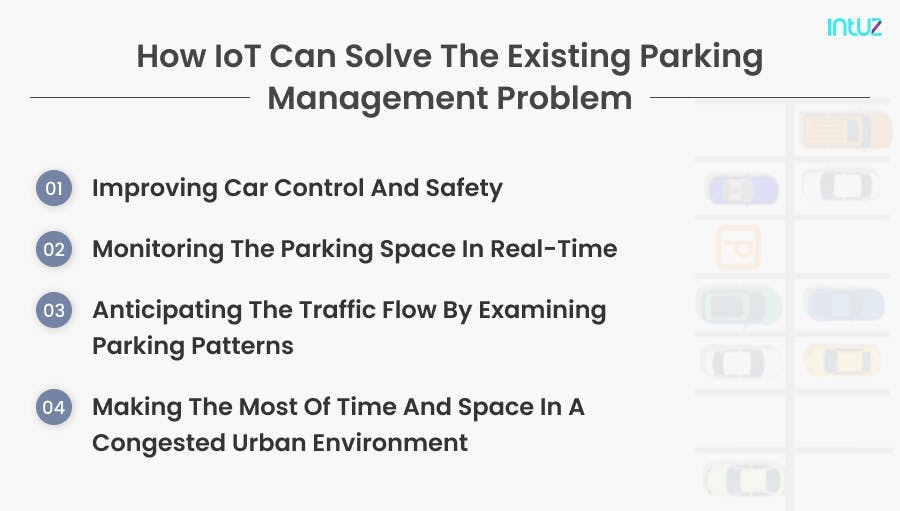
AIoT-driven parking management systems assist in meeting parking needs by solving various issues in the following ways:
1. Improving car control and safety
By alerting drivers when they are going to leave a car in a no-parking area, smart parking systems increase the safety of vehicles. Connected systems provide pertinent data about the areas with the highest violation density and the peak timing for parking violations. IoT also monitors traffic law reinforcement structures. It enables the creation of an efficient framework for tracking and controlling parking violations.
2. Demand Anticipation through predictive analytics
Integration of AI in IoT systems can help you estimate parking demands through detailed analysis of real-time and historical data. With accurate anticipation of demand, you can adjust parking space allocation and minimize congestion. This leads to more effective parking management.
3. Adjust pricing in real-time
Leveraging AI capabilities in IoT solutions, you can modify the pricing of parking slots in real-time based on the changes in demand. Maximize parking space utilization by offering users incentives for parking their vehicles in the least crowded areas. It also gives you the power to increase the pricing during peak hours to manage the demand and earn better revenue.
4. Monitoring the parking space in real-time
IoT facilitates search simplification and accelerates the parking procedure. Automated parking and reduced human intervention remove uncertainty and guesswork in seeking open parking spaces. The technology also prevents drivers from wasting time driving around crowded parking lots. IoT solutions help find a parking space by monitoring the facility occupancy in real time.
5. Computer vision
With the help of AI-enabled computer vision, you can automate vehicle type classification and license plate recognition. It helps you manage the vehicles’ entry and exit processes through automation. You can set up ticketless parking that helps in customized parking management based on vehicle types.
6. Anticipating the traffic flow by examining parking patterns
High-traffic zones like shopping centers, office buildings, and airports can use IoT-based smart parking solutions for optimization. IoT technology helps gain more clarity and insight thanks to connected parking management software, which fills a crucial decision-making gap.
7. User interaction through NPL technology (AI Assistant)
Make quality interactions with the users using AI-based NPL technology. By integrating NPL into your IoT-enabled parking systems, you can benefit from voice-activated parking assistance and multilingual support. The latest technology makes your parking system user-friendly for different users.
8. Making the most of time and space in a congested urban environment
There will be less search activity on the street as smart parking technologies make finding an open spot more manageable. As a result, the issue of traffic jams can be reduced, allowing city people to save potentially valuable time.
Business owners can maximize the use of available space with the help of AI and IoT-based parking management systems. For instance, the parking management system may automatically modify the meter rates according to the building's current occupancy. Automated meter renewal solutions will also assist parking facilities in increasing income and drawing in more customers.
The benefits of AI and IoT in smart parking management
As mentioned before, smart parking uses sensors like any other IoT application. The goal is to automate and reduce the time spent manually searching for a parking space–which is frustrating and tedious for the drivers.

Some IoT solutions may comprise a complete suite of services, including car searching functionalities, online payments, and parking time notifications. An IoT-connected parking solution can significantly benefit the driver and the parking facility owner. The key benefits of using IoT-powered smart parking management are:
1. Reduced costs
Using IoT in parking management, you can reduce the overall costs associated with running a parking facility. For example, you can use sensors to detect when a space is vacated and open up that space to other vehicles, reducing the need for manual labor.
2. Effective decision-making
IoT sensors and devices collect the data and AI analyses these data in real-time. It provides invaluable insights into the parking details. This helps you maximize the parking space utilization.
3. Personalization
Deliver personalized parking experience to the users as AI-integrated parking systems are capable of tracking and evaluating user behavior. It helps you make parking management more effective by allowing you to offer personalized recommendations.
4. Enhanced security
IoT enhances security as the sensors detect the vehicle and raise an alarm in case of unauthorized access. Security cameras and license plate scanners can be integrated into an IoT platform to detect and track suspicious activity automatically. The vehicle is constantly monitored so the driver can be stress-free.
5. Increased efficiency
The driver will be redirected to the nearest available parking spot saving time and fuel. In contrast, the parking company can easily manage more vehicles with an IoT system than with a human-based workflow.
6. Improved customer experience
IoT in parking management makes it possible to provide a better customer experience with functionalities such as real-time information on parking availability, guidance on the nearest available parking spot, and automated payment options. Easy parking improves the customer experience and allows businesses to realize greater benefits through repeated customer visits.
The challenges of implementing IoT and AI in smart parking management
Smart parking is an emerging market with immense potential. According to a recent study, the global smart parking market is expected to grow from $3.8 billion in 2020 to $5.4 billion by 2025. In the US, more than $8 billion yearly revenue is generated through commercial parking lots and the garage industry.
But even with such a large market, only a small percentage of parking facilities have adopted smart parking technologies. Several challenges are causing the slow adoption rate, including:
A. Organizational challenges
1. Awareness and acceptance
It is an enormous undertaking to transform a culture that has existed for many centuries. Parking has always been a current business involving direct financial exchange. The incorporation of technology represents a cultural shift that will take some time.
2. High cost of implementation
The capital investment required to install smart parking infrastructure can be very high. For example, a single parking space can cost upwards of $1,000 to equip with the necessary sensors and IoT devices. When you multiply that by the number of parking spaces in a given facility, the costs can become prohibitive.
3. Data privacy
When you implement AI and IoT in the parking management system, it raises concerns about data privacy. AI processes a vast amount of collected by IoT devices to deliver effective insights. By establishing strong security and compliance measures with privacy regulations, you can protect essential information like personal details to maintain users’ trust.
IoT-Based Monitoring And Speed Control Of Automotive Motors
Learn MoreB. Technical challenges
1. Correctness of information
A key challenge is ensuring correct information is displayed to the users on the application at all times. Inaccuracy or delays in receiving the data may result in drivers traveling to different places than the designated parking spots - causing much mayhem and confusion on the roads.
2. Availability of standard IoT tools
The service providers use technological platforms like the P&E PARC and PUCRS to manage the parking process which is so extensive. These include computer clients, servers, wireless and wired telecommunications systems, hardware sensors, dynamic messaging systems, traffic management devices, and application interfaces.
The biggest obstacle to lowering the price and complexity of IoT smart parking is making it possible for all these devices from hundreds of different vendors to speak with one another and connect to a single platform.
Another problem with installing a smart parking management system is requiring numerous sensors to be online to obtain data for a single booking window. You must have a variety of routers, which looks to be a challenge.
However, because of the mesh connection, all the sensors are internally connected and can function independently, even when not online. As a result, only one sensor is linked to the internet and transmits data to all other sensors. Since other routers do not require an internet connection, it performs well. Still, it is not the most reliable solution.
3. Lack of talent in the smart technology space
Automated parking management systems will require professionals who are familiar with IoT and can provide immediate troubleshooting. Deploying such intricate smart solutions requires the finest advice for carrying out the projects correctly.
Future of smart parking management
The parking industry is in the midst of a transformation. Rapid technological advances are enabling a new breed of parking solutions that are more efficient, convenient, and sustainable.
The smart parking management system's independent operating time will be extended via the LoRaWAN® protocol, designed for low power consumption. In the future, you do not need to change IoT sensors, devices, and gateways batteries more frequently than once every two to five years or according to the LoRa Alliance's specifications.
Additionally, the IoT-driven smart parking system is made to expand from a single gateway deployment to massive worldwide networks with billions of IoT devices. Using this or any other LPWAN protocol for a smart parking facility would be fantastic.
You may use ioT-based advancements coupled with data Science, Machine Learning (ML), and Computer Vision to automate the process. The technology will facilitate car number identification and auto payment deduction to make smart parking seamless.
The introduction of Autonomous Vehicles (AVs) is anticipated to have a substantial impact on the future of the IoT-enabled smart parking sector. Self-parking automobiles, specialized AV parking lots, and robotic parking valets are already being tested in several places worldwide.
Cities and parking managers from across the globe are well aware of how vital smart parking is. Many other technological advancements will be crucial for this upcoming generation of parking facilities. Some essential elements include next-generation digital cameras, wireless connectivity (like 5G), and Big Data analysis.
Along with IoT, when you implement AI, you can access futuristic trends. AI-enabled valet system automatically directs users to empty spots so that they can park their vehicles at the right place. On the other hand, accurate traffic prediction will help drivers park their vehicles at the right slot based on real-time conditions. If we talk about blockchain integration, you can ensure transparent transactions, improve privacy and security, and establish customer trust.
Here’s an updated version that naturally includes “smart parking management application development” while keeping it clear and SEO-friendly:
How Intuz Can Help You With AI-enabled IoT Smart Parking Management Application Development
At Intuz, we specialize in AI and IoT development to help businesses design and deploy cutting-edge smart parking management applications. Whether you’re a city planner, commercial parking operator, or enterprise facility manager, our team can help you:
- Develop end-to-end smart parking management applications – from IoT sensor integration to AI-powered dashboards.
- Implement real-time monitoring and predictive analytics to track occupancy, forecast demand, and optimize space utilization.
- Build secure, scalable IoT infrastructure with cloud connectivity, edge computing, and mobile app integration.
- Integrate reservation, navigation, and digital payment features to enhance the user experience.
- Deliver rapid deployment and continuous support based on our proven expertise in AI + IoT solutions.
Over to you
As the number of cars on the road continues to grow and the available land space for infrastructure and development remains constant, there is a greater need for solutions that can initiate faster and optimized parking – minimizing the hassle and unnecessary congestion on the roads. IoT combined with AI is the ideal option for sustaining quick urbanization.
Are you a commercial real estate developer, municipality, or parking lot operator seeking to integrate IoT and AI to develop custom software applications for parking management, monitoring, and analytics?
Book a Free 45-minute Consultation with Intuz AIoT Experts Today!
During this personalized session, our experts will:
Assess your current parking infrastructure and requirements
Outline a tailored IoT and AI strategy for smarter parking management
Demonstrate cutting-edge parking analytics and monitoring capabilities
Provide a detailed implementation roadmap for seamless integration
